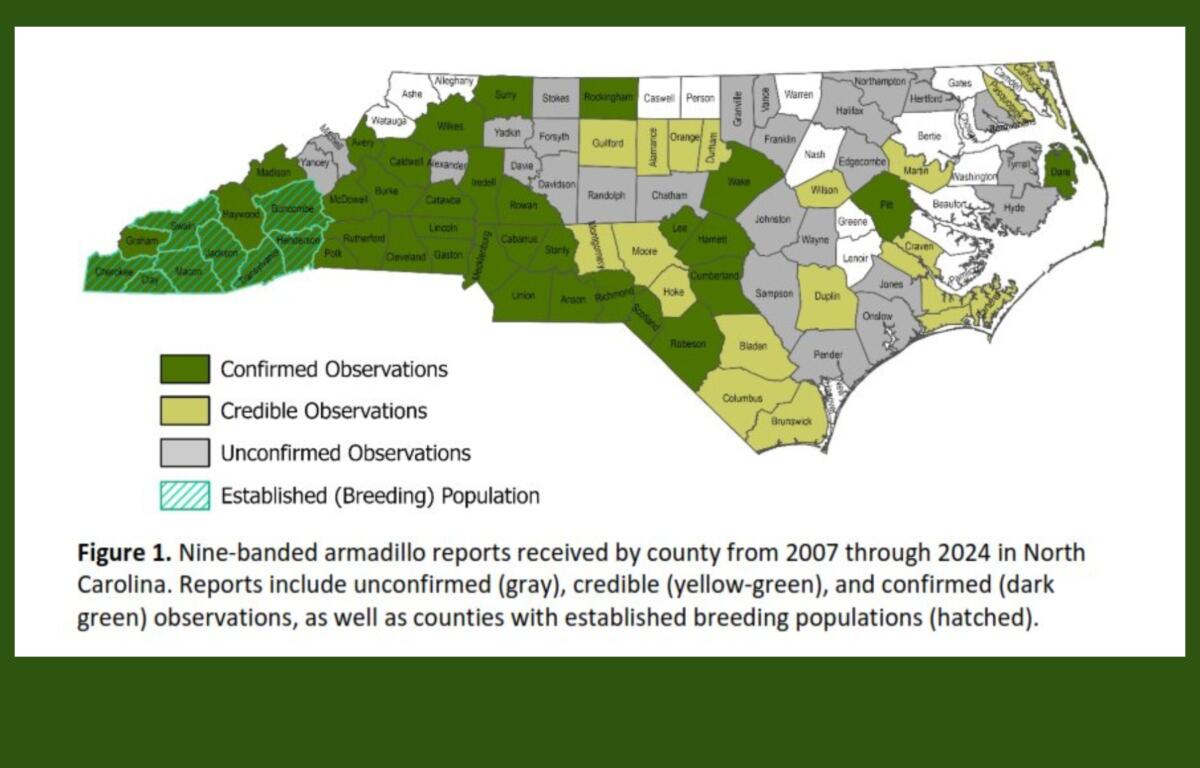ASHEVILLE, N.C. (828newsNOW) — Armadillos have been quietly spreading across North Carolina, with sightings now reported in more than half of the state’s counties, according to the North Carolina Wildlife Resources Commission.
The first confirmed record of the nine-banded armadillo in North Carolina was in 2007 in Macon County, near the Georgia border. Since then, state wildlife officials have received roughly 900 reports from 70 counties, ranging from western Cherokee County to coastal Dare County. Verified sightings as of 2022 span 28 counties, with the most recent in Wilkes and Madison counties.
The highest density of sightings is near the area where North Carolina meets Georgia and South Carolina, NCWRC officials said. Madison County is notable for its proximity to Tennessee, indicating the species continues to expand naturally from neighboring states.
Native to Central and South America, the nine-banded armadillo crossed into Texas in 1849 and gradually spread across the southeastern United States, crossing the Mississippi River in the early 1940s and reaching western Tennessee by 1980. Armadillos are classified as nongame species, with no closed season or bag limit.
A unique mammal
The nine-banded armadillo is known for its armor-like skin, long scaly tail and pig-like snout used to forage by smell. Its diet consists primarily of insects, grubs and other invertebrates. The animal moves slowly in a wandering pattern and sometimes makes grunting sounds. Armadillos are in the same order as anteaters and sloths and are the only mammals with a protective shell.
Benefits and drawbacks
Experts say armadillos play a role in controlling insect populations and aerating soil through their digging, which can improve nutrient mixing. Their burrows also provide shelter for other wildlife, including snakes and small rodents. Additionally, nine-banded armadillos are used in scientific research, particularly in studies of leprosy.
However, the species can cause property damage by digging in lawns and gardens, weaken foundations with burrows and occasionally transmit diseases such as leprosy to humans. While mostly insectivorous, armadillos may also damage crops in some areas.
Armadillos are a familiar, if sometimes unwelcome, part of North Carolina’s expanding wildlife landscape, offering ecological benefits and potential challenges.
For a detailed scientific look at their expansion, see this report.


